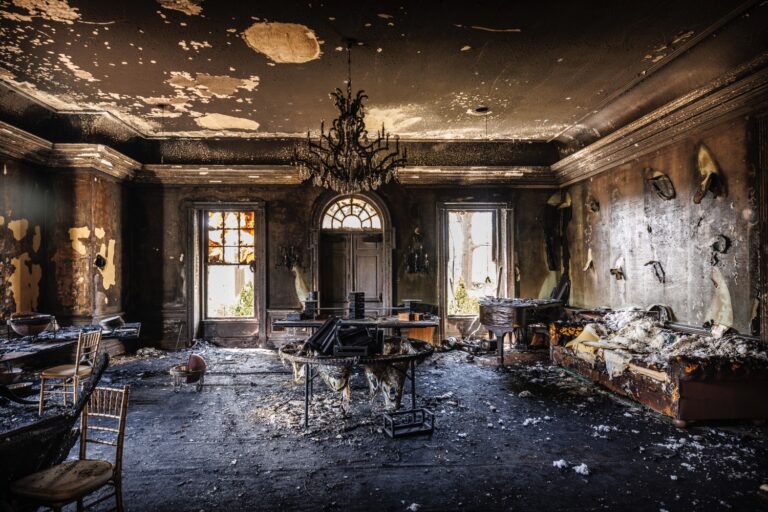 Riga, Latvia – Joined by the Latvian president, other high government officials and Israeli Diaspora Affairs Minister Yuli Edelstein, the Jewish community of Riga inaugurated its completely restored Peitav Synagogue, a historic structure that both survived World War II and remained open in the midst of Soviet oppression.
Riga, Latvia – Joined by the Latvian president, other high government officials and Israeli Diaspora Affairs Minister Yuli Edelstein, the Jewish community of Riga inaugurated its completely restored Peitav Synagogue, a historic structure that both survived World War II and remained open in the midst of Soviet oppression.
According to Rabbi Mordechai Glazman, rabbi of the restored synagogue and director of the Chabad-Lubavitch Community of Latvia, the centrally-located three-storey Art Nouveau building dates back to 1905. During the two-year restoration process – which was funded with sizable contributions from the European Union, the Latvian government, philanthropists and local community members – prayer services alternated between various locations in the synagogue.
Glazman and locals emphasized that the project has been a source of pride for Riga’s Jewish population, and that young adults in the city are strengthening their ties to the community because of it.
Edelstein, a Russian-born refusenik who had visited the synagogue as a 26-year-old in 1984, told the Jerusalem Post that much has changed since then. “This time … you had the president of the state, the prime minister, the ministers of transportation and culture, the mayor, the deputy president of parliament,” said the minister, who was in Riga for bilateral talks touching on Israel’s relations with Europe and the Iranian nuclear threat. “It’s a different situation from those handful of elderly people in the synagogue.”
Glazman said that the reconstruction effort began in earnest after the EU offered to help. At first, the entire roof needed replacing. Then, crews tackled each floor.
“A large part of the floors had rotted,” revealed the rabbi, whose wife Rivkah Glazman ran the community’s Hebrew school from the building before the opening 15 years ago of the Ohr Avner-funded Ohel Menachem Jewish School. “Everything had to be changed: electricity, water, gas, windows.”
Artisans and carpenters also overhauled the Holy Ark, which during World War II had been concealed from Nazi forces. They also restored original fixtures and moldings on the ceilings and around windows.
A week after the dedication ceremony, some 20 young members of the community brainstormed ways to expand the Torah classes already offered at the synagogue.
“We were trying to see what we could do,” said Romiel Kinber, 31. “We have nice wards in the synagogue. Let’s put life into that.”
For years, a daily quorum of at least 10 men has gathered at the synagogue for morning prayer services, and at the beginning of the restoration, Shabbat services drew more than 70 people. Now that the ornate space – among its decorations are exterior walls featuring stylized palm branches and lotus flowers – has been fully renovated, people like Kinber are confident that more of the capital’s estimated 15,000 Jews will make synagogue attendance a regular part of their lives.
“If you start coming to shul, you don’t know what it’s all about, especially if you’re young,” explained Kinber, who came to the synagogue by way of the Chabad House four years ago. “You look around and you ask, ‘Is this right place for me? Or is it for those over 70?’ Now, the [place] just feels like home.”
Kinber emphasized that he speaks from experience. When he first attended programs offered by the Glazmans and going to services, he started reading the Torah.
“I realized there was a complete conflict of what I’m reading and what I’m doing,” he related.
So when Rabbi Shneur Zalman Kot, an assistant at the synagogue, suggested that Kinber make a positive resolution on the occasion of a Jewish holiday, the man resolved to don tefillin at least once week. After a short time, Kinber forgot about the resolution, but three weeks later, Kot asked how things were going.
“I normally keep my word, especially to G-d,” stated Kinber. “It was then that I woke up. I started coming every week.”
Today, Kinber and his wife keep a kosher home. Every Shabbat, the man walks an hour each way to go to synagogue, and during the holidays, the family stays at a hotel closer to the center of the community. During the week, he studies Torah with Glazman and Kot, and utilizes the Web site Chabad.org to further delve into Jewish laws and customs.
He predicted that even more people like him will embrace their heritage in the near future.
“We now have a chance to attract more and more young people,” he said. “Today, I can see other young people around.”
(Tamar Runyan, Chabad.org)











One Response
My father was an advisor to the last president and I had the big zechus to visit Riga and meet Rabbi Glazman. May him and his family have a tremendlously amazing new year and all the simcha and hatzlocha to the rabbi and all the generous philanthropists who helped restore the shul!
Yidden wake up! There are Jews outside of flatbush and new york city! Jews in the former Soviet Union are struggling to survive… open up your hearts and minds!